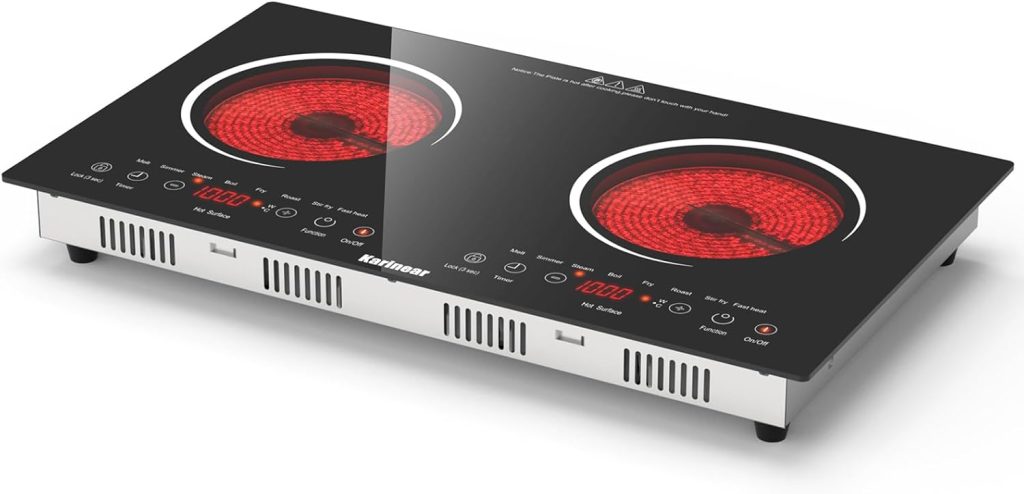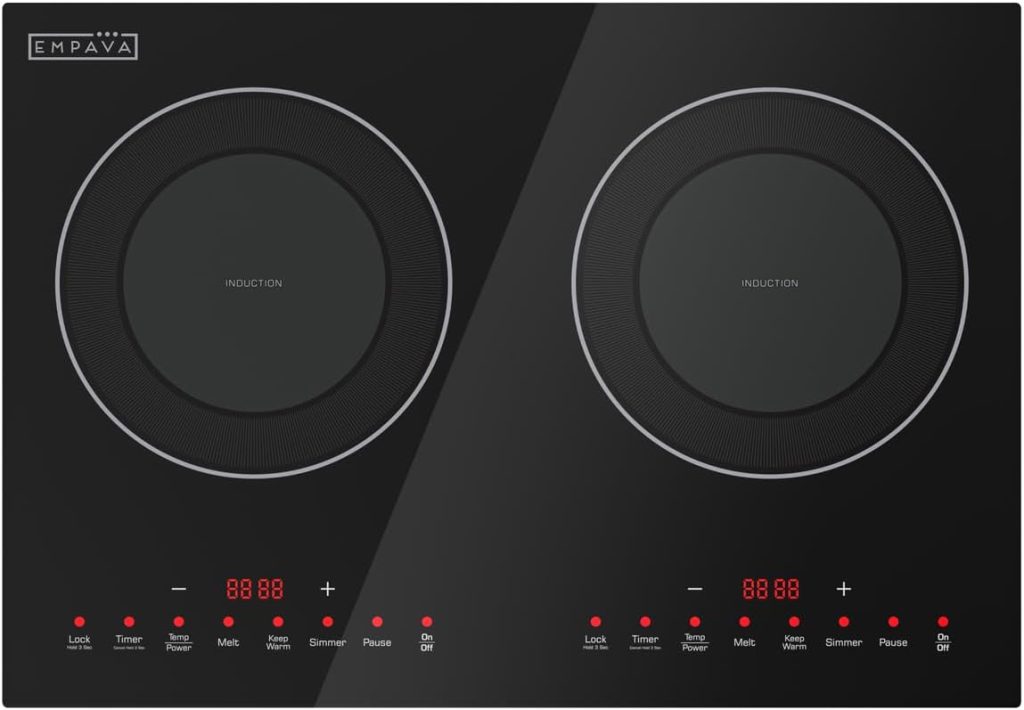Modern kitchen trends have moved away from old-school coil stoves toward smooth-surface cooktops, made of sleek glass-ceramic. Within this category, the two most popular options are radiant and induction cooktops.
Here’s a clear, user-friendly comparison to help you decide which suits your home best.

🔥 Radiant Cooktops
How It Works
Radiant cooktops use electrical heating elements beneath a smooth glass-ceramic top. These elements heat up and transfer warmth through the glass, warming your cookware directly. ❄️ The heat radiates through the top surface rather than heating the air.
Advantages
- Affordable: Typically less expensive upfront than induction models.
- Simple Cooking: Use any type of cookware—metal, ceramic, appropriate sizes.
- Easy to Clean: Smooth surface can be wiped down quickly after cooking.
Drawbacks
- Less efficient: Heat loss through residual warmth and glass surface.
- Slower heat control: Takes longer to change temperature, from boil to simmer.
- Higher residual heat: The cooktop remains hot after cooking, needing more cooldown time.

⚡ Induction Cooktops
How It Works
Induction uses electromagnetic fields beneath the ceramic surface to directly heat induction-compatible cookware, such as cast iron or magnetic stainless steel. The cooktop itself stays relatively cool—the pot heats up, not the surface.
Advantages
- Energy-efficient: Nearly 90% of energy goes into the pan—compared to 60–70% for radiant.
- Rapid heating: Heats water and food much faster—often up to 50% quicker.
- Precise temperature control: Instant response when adjusting settings.
- Cool surface: Safer and easier to clean—spills don’t burn onto a hot surface.
Drawbacks
- Higher cost: More expensive to buy than most radiant models.
- Cookware requirement: Only works with magnetic-based pots and pans.
- Noise: Some models make a faint buzzing when active.
🔍 Head-to-Head Comparison
| Feature | Radiant Cooktop | Induction Cooktop |
|---|---|---|
| Upfront Cost | Mid-range | Higher |
| Energy Efficiency | ~60–70% | ~85–90% |
| Heat Response | Slow (warm-up lag) | Instant temperature control |
| Safety | Hot surface after use | Cooler surface, safer for kids |
| Cookware Compatibility | Any flat-bottom cookware | Magnetic cookware required |
| Maintenance | Easy to clean, but hot to touch | Very easy, generally cool to the touch |
| Use Cases | General cooking, casual use | Precision cooking, quick stir-fry |
🧭 Which One Should You Choose?
- Go for radiant if you’re on a budget, already own suitable cookware, and cook mostly basic dishes.
- Choose induction if you want fast, energy-efficient results, precise temperature control, and a safer surface.
❓ FAQ: Induction vs Radiant Cooktops
Q1: Can I use non-magnetic pans on a radiant cooktop?
A: Yes—radiant cooktops work with any flat-bottom pot, including aluminum, copper, and ceramic.
Q2: Does induction cooking save energy compared to radiant?
A: Yes. Induction typically converts 85–90% of energy into cooking heat, vs. radiant’s 60–70%.
Q3: Is induction cooktop safer than radiant?
A: Yes. Induction surfaces stay cooler since only the cookware heats up, reducing the risk of burns.
Q4: Are there noise or humming issues with induction cooktops?
A: Some models may produce mild buzzing, especially at high settings, but it’s usually quiet and not bothersome.
Q5: Which cooktop is faster for boiling water?
A: Induction—usually boils water in half the time of radiant surfaces.
✅ Final Thoughts
Both radiant and induction cooktops deliver a sleek, modern, and easy-to-clean cooking experience. Your best choice depends on your budget, cooking style, and kitchen needs.
- For affordability and cookware flexibility ➡️ Radiant
- For speed, efficiency, safety, and precision ➡️ Induction
Upgrade your kitchen with confidence—choose the cooktop that fits your culinary lifestyle.
Leave a Reply
You must be logged in to post a comment.